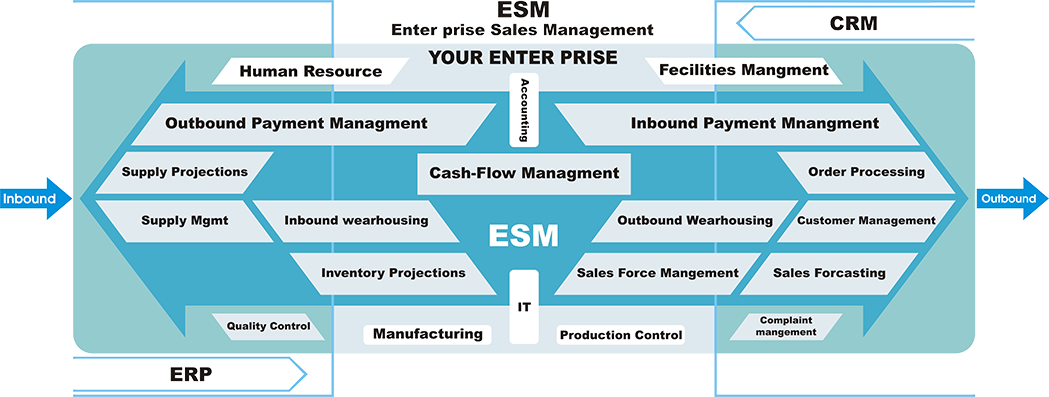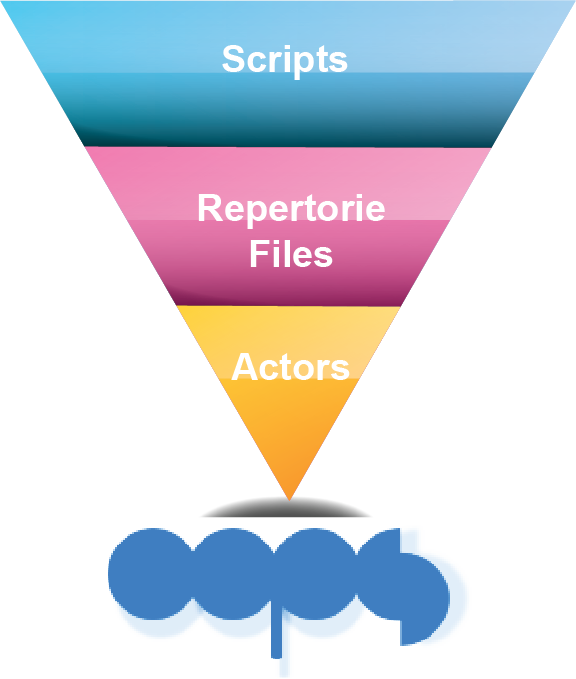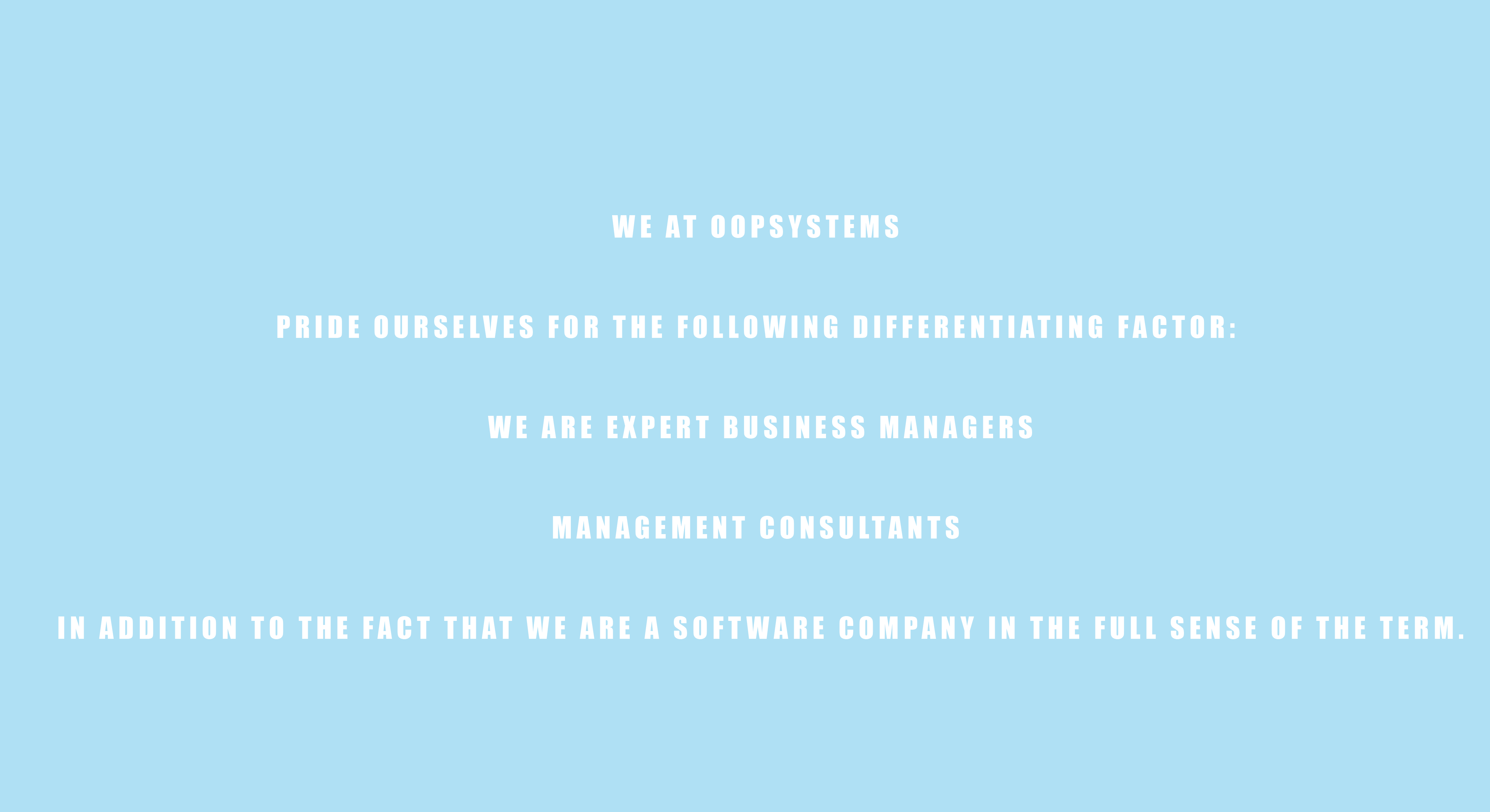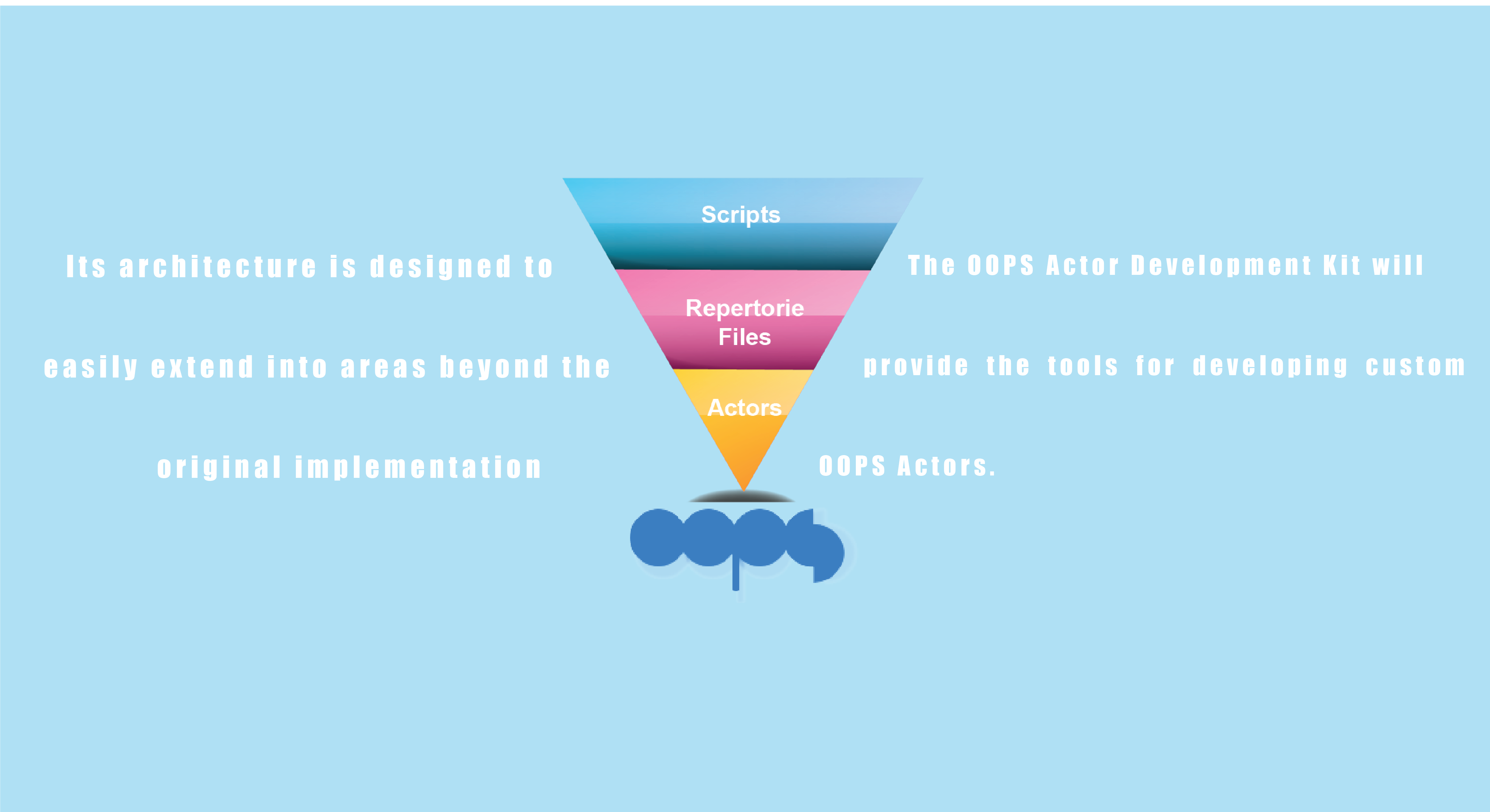We are expert business managers / management consultants in addition to the fact that we are a software company in the full sense of the term.
Among Our experts you will find a theoretical business research team which is comprised of four PHD's and six MBA each specialized in a different aspect of business management.
However, the majority of business problems we approach can be handled on a much more practical level.
OOPSystems started out as a software company. We were the preferred provider for simple solutions to complex software problems within the software industry.
Our clients included Microsoft, Adobev, Borland, Symantec, HP among other prominent names in the software industry.
Our skills in solving complex software problems, whether they were algorithmic, architectural, or managerial are unmatched.
Definition:
ESM is a system that addresses the slice of your business that directly relates to trading.
Description:
Based on the definition of ESM you can find the answer to any question
that comes up as to whether ESM addresses a specific issue.
If a problem is directly related to the trading process ESM includes it in its domain.
This also means that there are many business functions that are not included in the ESM Space.
Take for instance Human resource management. Here is a crucial business function.
However, it does not directly relate the trading process.
The same goes for facilities management, Payroll, Manufacturing & Manufacturing Quality, etc.
ESM includes many accounting functions, yet it does not include all.
ESM helps with AR/AP because they relate to the trading process.
But Even in AP you will find that ESM does not concern itself with the invoice that came from the company that repaired the front gate,
since that is not related to the trading process.
The same case applies to IT, where obviously ESM is an IT function, however it does not encompass all of IT.

ESM came as a natural response to the demands and challenges of the trading functions in any business.
It fully addresses that aspect and that aspect alone.
Trading is the most crucial function in any business.
Knowing all about how your company's trading functions are performing is the only way you can deal with problems that are slowing your business down
then plot a path for its growth.
ESM includes secure protocols that allow for your customers and suppliers to
actively participate in the functions of your business that necessarily include them and may be even depend on their input.
A to Z see through is a dream every business manager wishes to realize. ESM will help answer the following questions :
How will more orders affect my supply, my inventory, my cash-flow etc ?
How will dropping this supplier affect my outbound inventory ?
Which supplier has the real lowest cost (not just price) for this customer order ?
How many RFQ's failed to turn into orders because of various loopholes in the system ?
What will my sales be like next quarter ? Next year (Is there a scientific way that will always help me answer these questions?)?
How much did this order really cost in the end? Consider: multiple supplier price factorization, supplier-side shipping, handling and customs, in-house processing, customer-side shipping, handling and customs, complaint management, Supplier Payment processing, Customer payment processing, uneven terms based interest charges, Bank fees, free Samples before this customer was ready to order, etc
Do we have enough cash to grow the business by 28% in the next 6 months? do we borrow? or do we allow this opportunity to pass?
Do I need to hire more customer service representatives? What is the utilization percentage of their time?
Do we need to expand our inventory space? What is the level of utilization?
Do I know what the employees are doing?
Can information available to an individual be shared by others in the company?
Supervisors have to teach subordinates everything, even worse; they have to repeat the process again when new personnel are introduced. How can I avoid some of that?
Do employees have to repeatedly keep filling in those documents every day?
Do I have to employ more people to accommodate the growth of trading in my company? How can justify human resource costs, scientifically?
The performance appraisal of the sales person still depend on the subjectivity and experiential judgment, having not enough historical records?
The decision system of the top management still depends on the subjective judgment and personal experience. These problems are the type of problems ESM concerns itself in resolving.
In summation:ESM is a new solution for an age old problem. ESM is the answer that CRM, ERP and the rest of such " acronym-ized " business management market spaces, have not been able to yet answer.
The other market niches use the concepts of automation to alleviate one need or another that an enterprise encounters in the course of doing its trading. No one has fully addressed the complete trading cycle, from supplier to customer encompassing, to date.
Definition:
BizOS® uses the unique technology of Enterprise Management Framework, EMF® for short, to prepare for the realization of our goals.
EMF® is a platform of OOPSystems with which we can develop enterprise applications, including: Workflow engine, event manager, schedule manager, commercial logic, arithmetic logic, security engine, etc.
Definition:
BizOS® is completely built with Dynamic-Modeling technology. This new technology is a huge departure from traditional programming and software making methods.
It is still a closely held secret, so we can't tell you much about it. However, you will
most definitelyreap the benefits it brings to such a complex system as BizOS®.
This is not the first time OOPSystems invents a new technology that later became the standard for the industry.
Definition:
OOPs is a very powerful natural language programming interpreter.
Natural language interpreters allow humans to write or speak the language with which they are already intimately familiar, to invoke action(s) on a computer.
It has a small footprint, with its core taking up less that 100k of memory, and through some clever design choices, it avoids the combinatorial explosions that plague many natural language interpreters.
OOPs is designed with a very rich feature set.
It is capable of driving most any object on a Windows® machine(From Windows 95® on), whether launching and killing processes (stand-alone applications), invoking actions in OLE-COM® and OLE-Dispatch® components, or invoking functions in any and all DLL's installed on the system.
OOPs can also run VB®-scripts, C®-scripts and Java®-scripts. Its architecture is designed to easily extend into areas beyond the original implementation, and also allows for third parties to develop what we term Actors, so they can drive their own objects with our Natural Language Interpreter engine.
 OOPs was designed from the ground up to handle more than the English language.
OOPs was designed from the ground up to handle more than the English language.
Its features include multiple, runtime loadable, Repertoires.
Repertoires are files that allow the user total control over language definitions.
In a Repertoire file (see OOPS Reference Web), Users tell OOPS which
of the available
Actors
are currently active, and assigns each a Natural Language name
(Noun), along with a loadinginstruction
for making the Actor active.
The Repertoire File also assigns names to each
of the Actions(Verbs) which characterize the Actor.
Variations, or "Complements" of these Actions are also defined.
OOPs also features phrase recognition, in addition to synonym and
other kinds of complex linguistic resolutions.
All of these features are user-definable and extensible.
OOPs provides its users a very forgiving programming language.
Users can be almost illiterate
(for example, a 5 year old child) and still produce fulfilling scripts with this interpreter.



